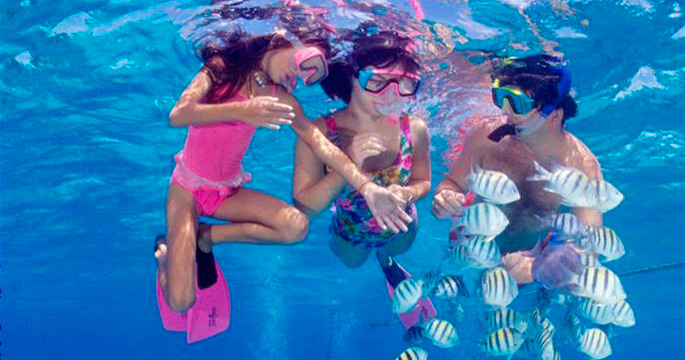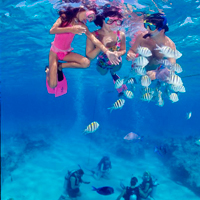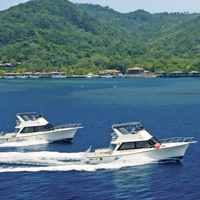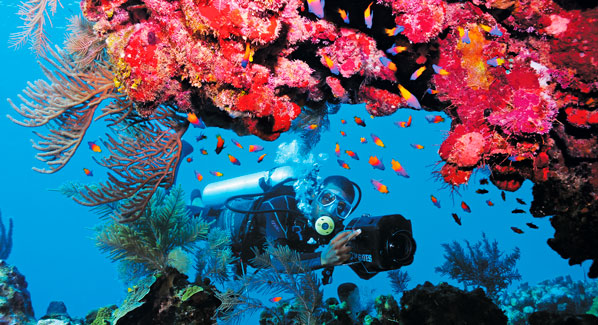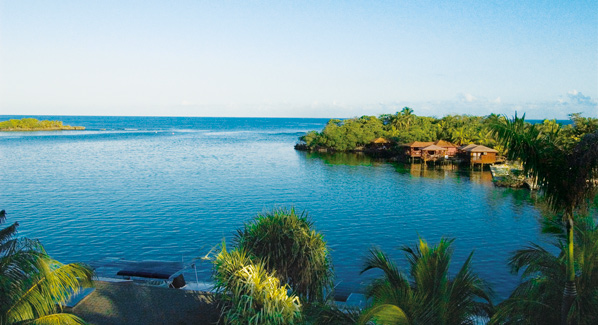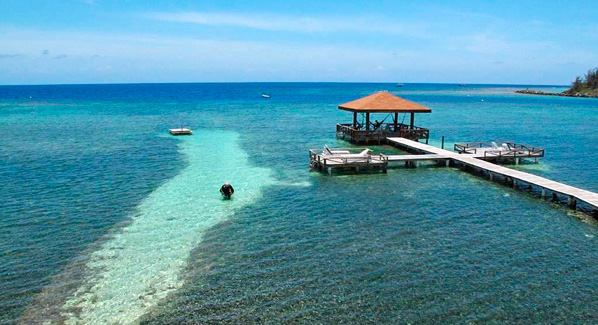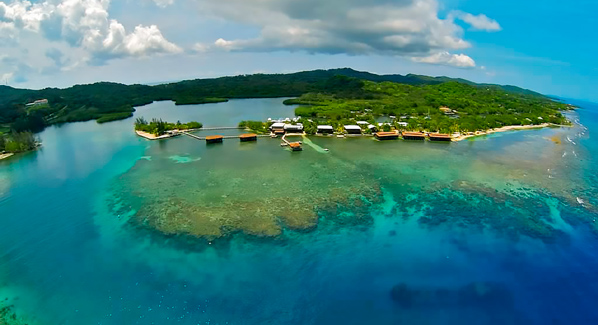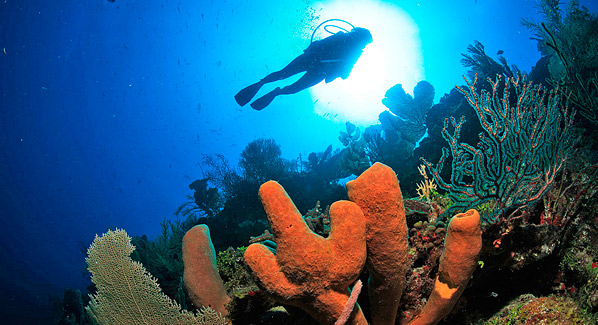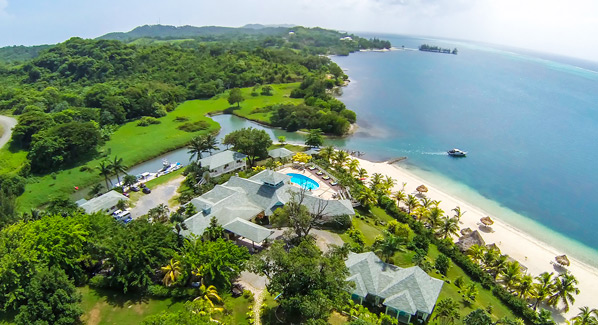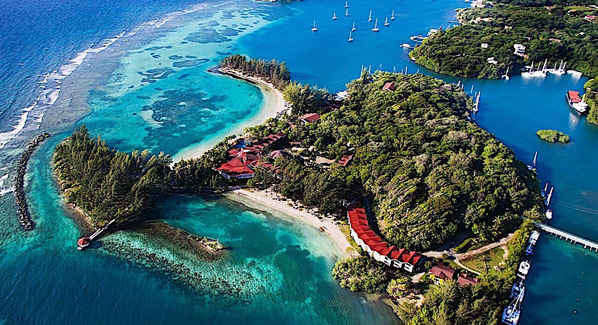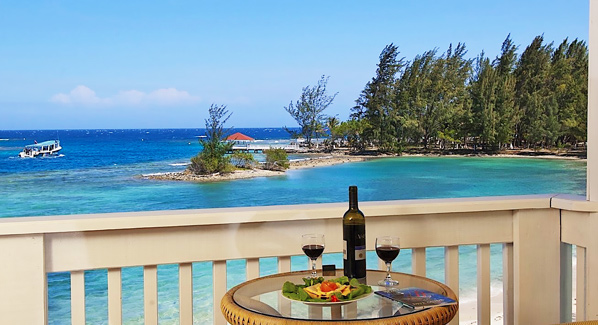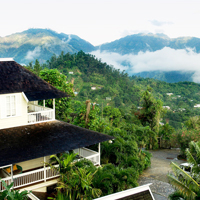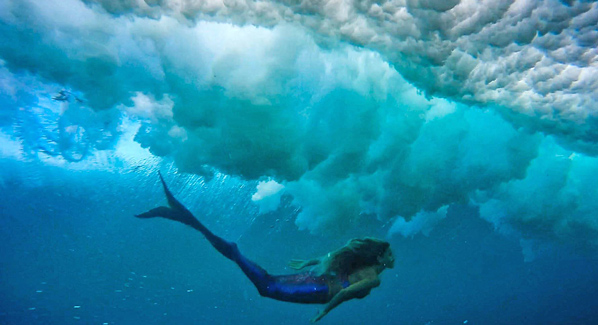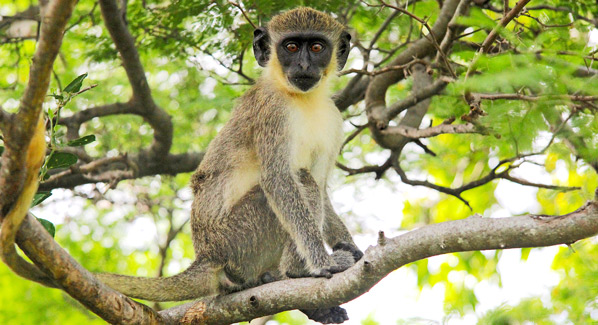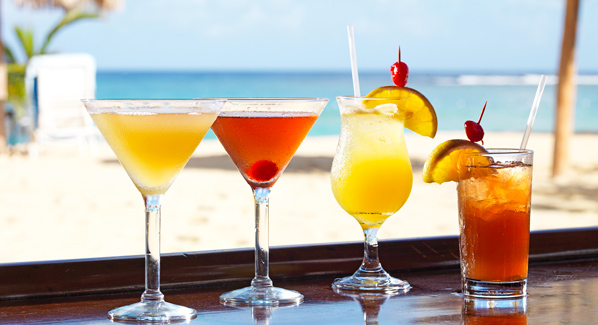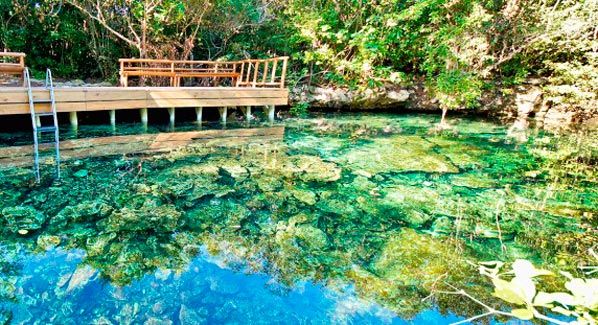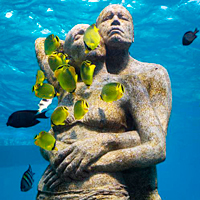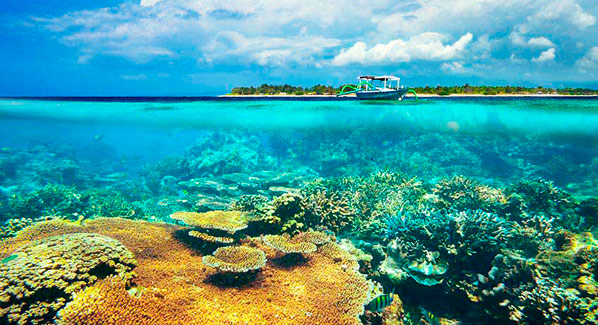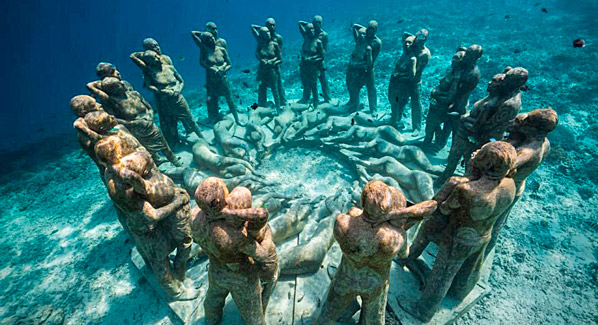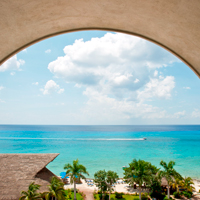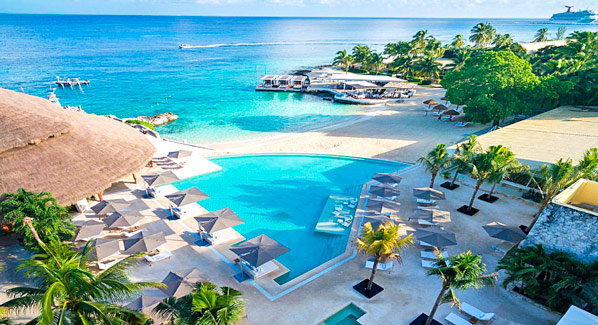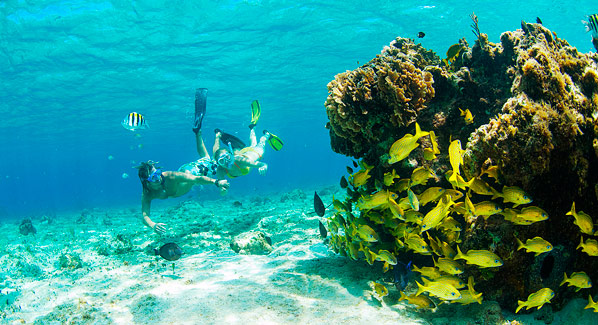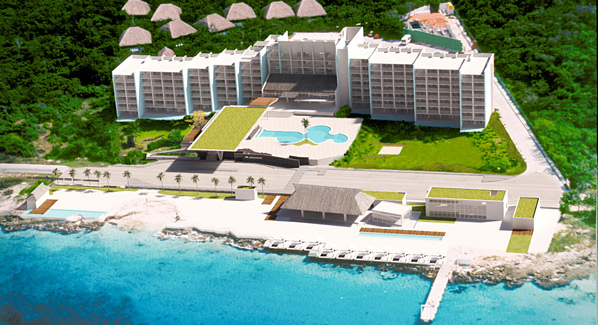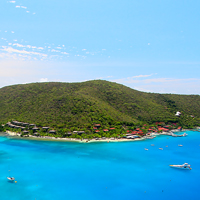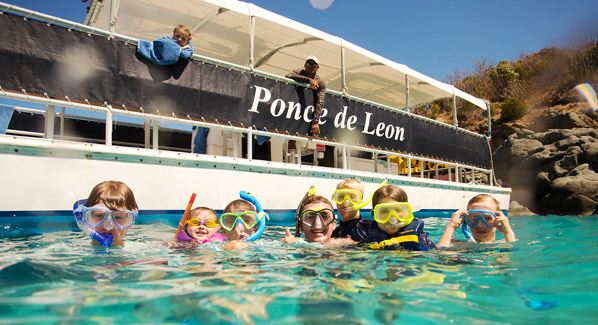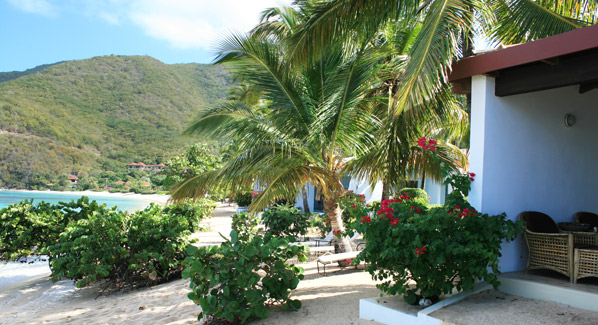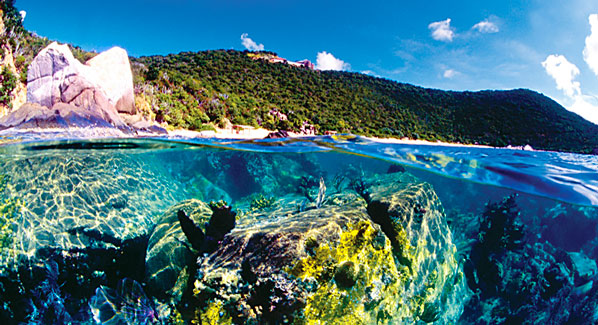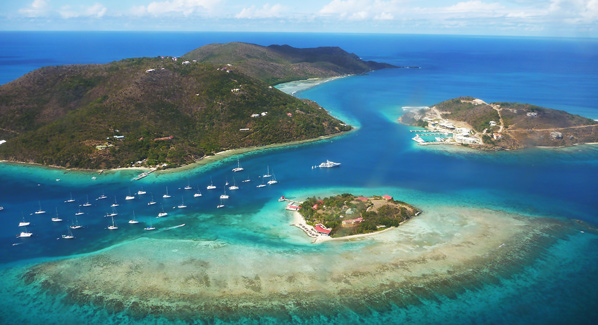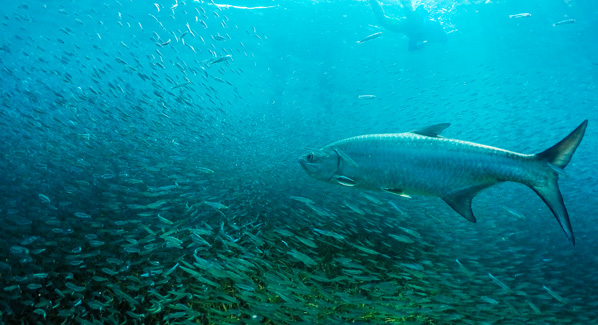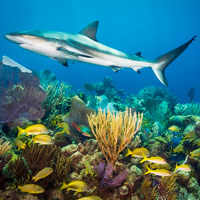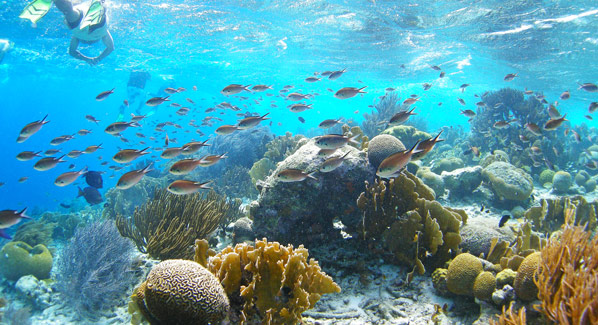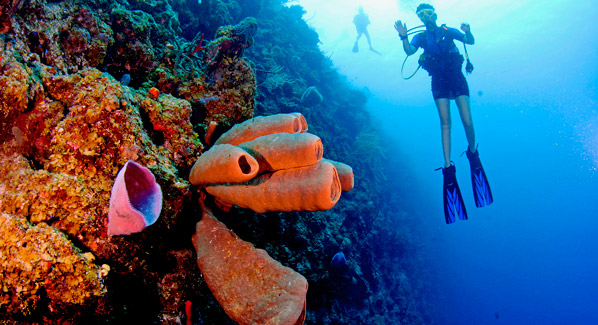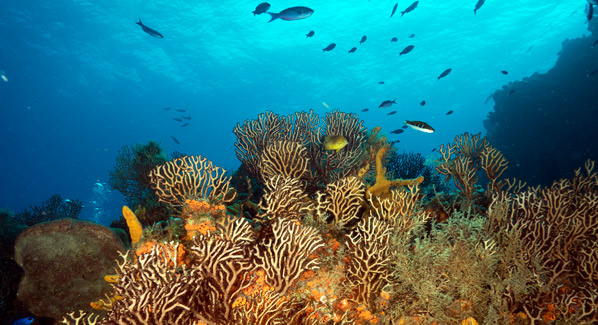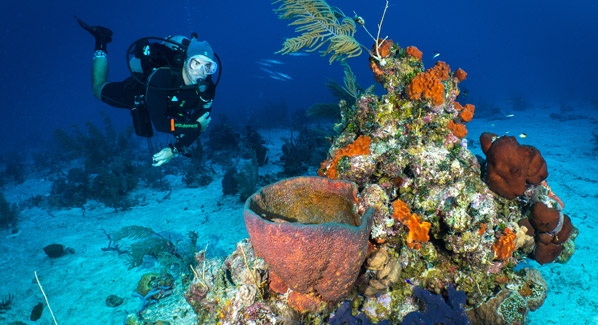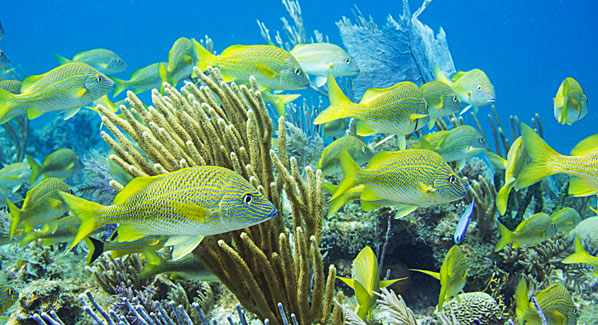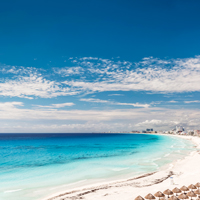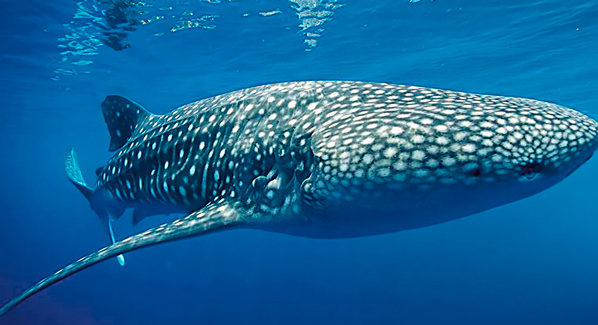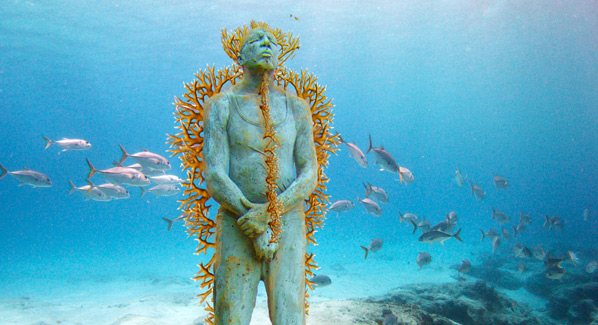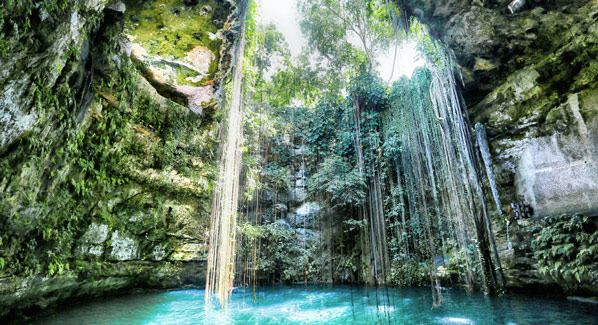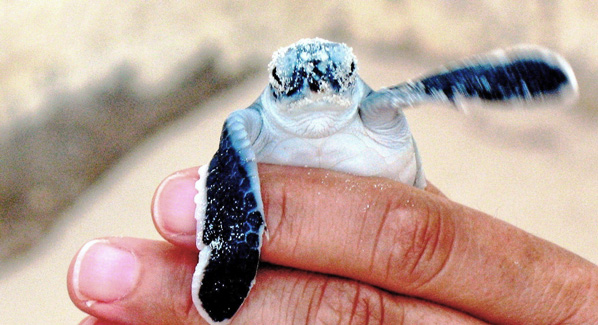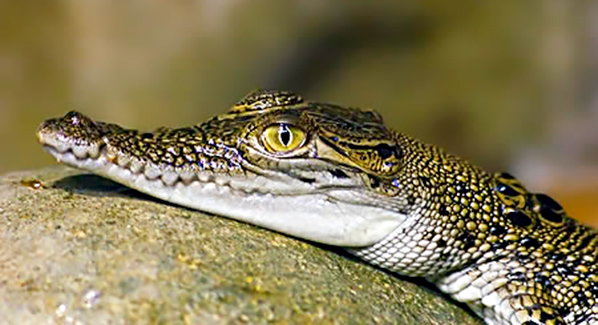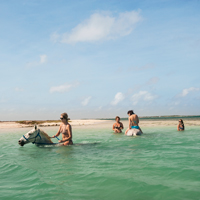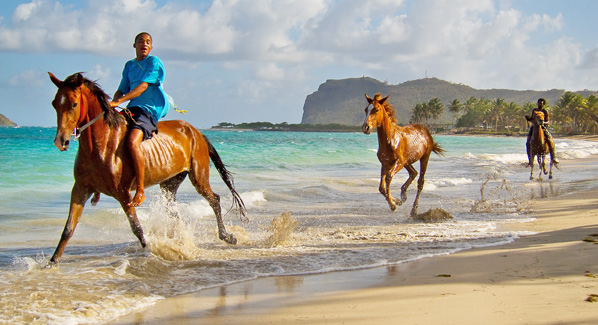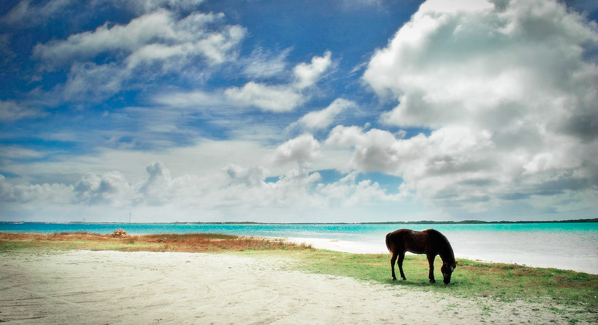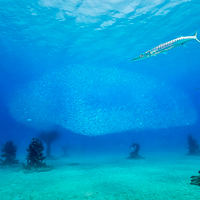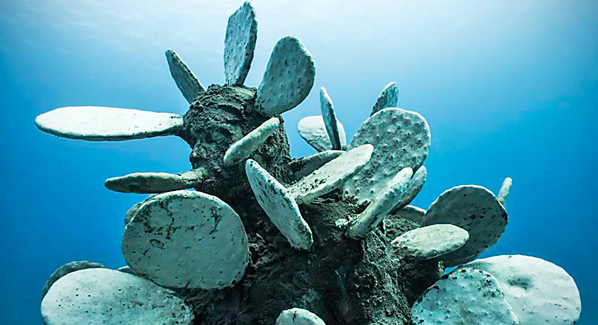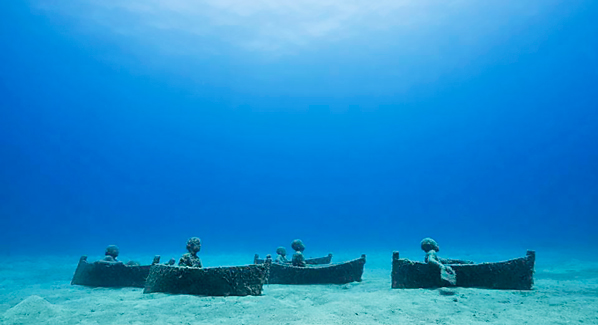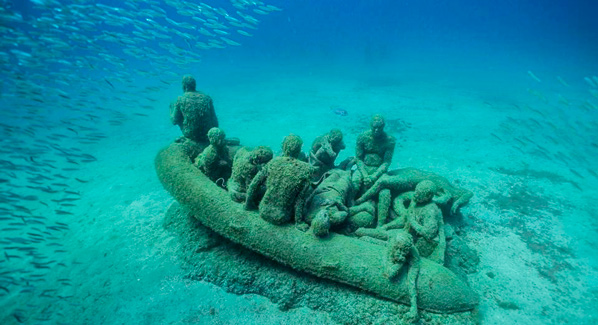On the island of Grand Cayman, the clear Caribbean waters that wash the shores create a siren song few can resist. The island has attracted scuba divers for decades, but there are also plenty of snorkel-worthy reefs. And some of the best sites lie just offshore of premier beach resorts. Here are three of the best.
Tortuga Club
Morritt’s Tortuga Club is about as far as you can get from the resorts of Grand Cayman’s Seven Mile Beach and the cruise ship crowds of downtown George Town. The property is located on a white sand beach on the island’s windward eastern coast, where snorkelers can enjoy calm waters, thanks to the extensive barrier reef that parallels the shore. In front of the club, sea grass beds and coral heads begin just a short way from shore, but reaching the liveliest reefs will require about a five minute swim across the lagoon to the lee side of the barrier reef. Less ambitious snorkelers need go no farther than the pier that holds the over-water bar, where colorful tropical fish gather around the pilings. In addition to snorkeling from the beach, guests can sign up for a boat tour with on-site Tortuga Divers, or head to nearby Ocean Frontiers for a snorkel safari that takes in three different sites along the island’s eastern end.

Suites at Morritt’s Tortuga Club feature separate living areas and fully equipped kitchens. Spacious floor plans make this east end property a favorite with families and groups. Photo: Tortuga Club
The Tortuga Cub is an expansive, self-contained resort that includes more than 200 one, two and three-bedroom suites, spread across a large section of beachfront. Amenities include three pools, a fitness center, a full-service spa, supervised children’s programs, and an on-site dive shop. David’s Deep Blue restaurant serves an upscale menu, while Mimi’s Dock Bar blends casual fare and signature libations with a 360-degree water view. The Club has been named one of the Caribbean’s top family destinations, as there is a wide range of daily activities such as beach barbecues, volleyball, karaoke and game nights. Adults will enjoy the swim-up bar at the infinity-edge Grand Pool, which has spectacular ocean views. It’s a half-hour drive from the club to the Seven Mile Beach area, but between the resort’s facilities and a group of nearby shops, there’s really no reason to leave this waterfront oasis of relaxation.
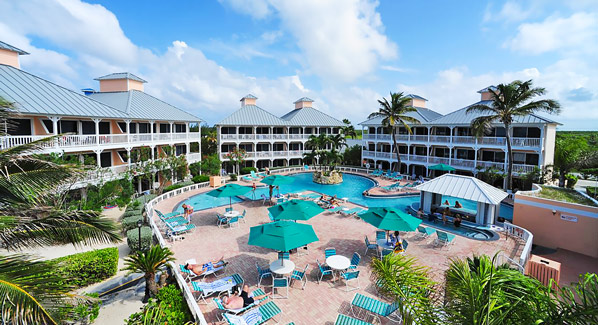
Grand Cayman’s Tortuga Club is a large resort with three swimming pools. Shown here is the family pool. The nearby Grand Pool sits directly on the beach, with views enhanced by an infinity-edge design. Photo: Tortuga Club
Sunset House
Sunset House sits within mere yards of the Caribbean Sea, but it isn’t technically a beach resort. That’s because there are no sandy beaches on the southwestern coast of Grand Cayman Island. Instead the property perches on a low limestone outcropping that drops right into the ocean. This is actually good news for snorkelers and divers, who can submerge on a series of finger-like coves by simply making a giant stride entry from shore. The waters are calm and clear, and there’s an abundance of marine life, including passing turtles and rays. While divers head out to deeper water and Grand Cayman’s famous wall, snorkelers can spend hours in the shallows exploring the nooks and crannies of the reef. Those who venture a bit farther from shore may catch a glimpse of the site’s famous bronze mermaid statue, which rests in 50 feet of water, but is often visible from the surface.
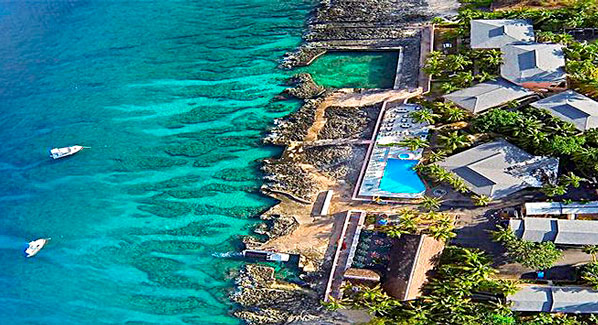
An aerial view of Sunset House shows the maze of coral-lined sand channels that extend outward from the shore, and the cove where novice snorkelers can practice their skills. Photo: Sunset House
Sunset House bills itself as a hotel run by divers, for divers. It is a mid-sized, mid-priced and family-owned resort with 50 rooms organized into smaller two-story blocks. A number of rooms provide direct water views, and all are furnished in a comfortable but unpretentious style. In addition to an oceanfront swimming pool and hot tub, there is a sheltered swimming lagoon carved out of the limestone. Downtown George Town is a short walk away, but most guests gravitate to the on-site Sea Harvest Restaurant and the adjacent My Bar. The outdoor terrace at this landmark watering hole is a favorite happy hour gathering spot for island dive masters and locals, and there is no better place on the island to take in a sunset.
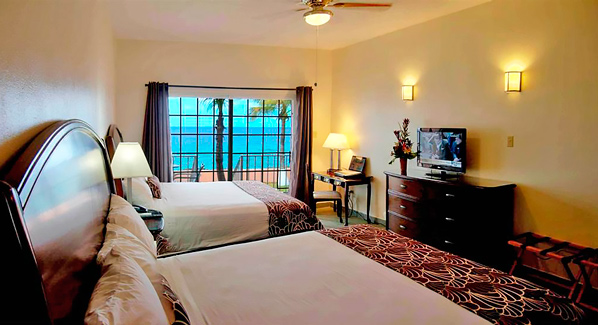
Rooms at Grand Cayman’s Sunset House have undergone recent renovations. Some provide direct ocean views, and all include a full range of modern amenities and comforts. Photo: Sunset House
Retreat at Rum Point
Island lore attributes the name Rum Point to the casks of the namesake spirit that washed ashore when a cargo shipwrecked on Grand Cayman’s barrier reef. Today, the site is intoxicating for different reasons. The point’s white sand beach is shaded by a grove of Casuarina pines, and surrounded by the island’s finest shallow coral reef. Snorkelers can make a 30-yard swim from shore across a meadow of sea grasses to coral heads that begin in depths as shallow as five feet. The seascape includes staghorn, elkhorn and brain coral, along with a variety of colorful soft corals, sea fans and sea whips. The reefs are patrolled by schools of rainbow parrotfish, blue tang and queen triggerfish. Because this site is less than a half-mile from Grand Cayman’s famed Stingray City, snorkelers may also catch the occasional glimpse of a passing flock of rays.
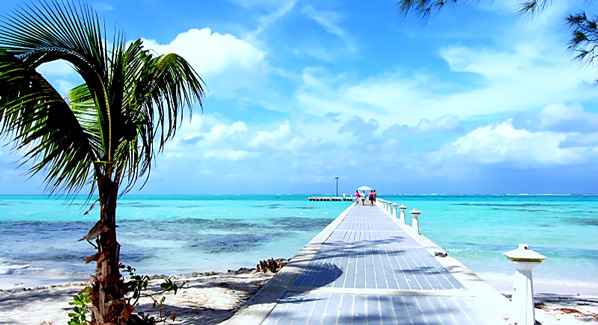
At the Retreat at Rum Point, a long pier provides easy access to a shallow lagoon that is home to some of the best snorkeling reefs on the island of Grand Cayman. Photo: Retreat at Rum Point
The place to stay for easy access to the reefs is the Retreat at Rum Point. This small resort is made up of 23 condominiums with one, two and three- bedroom floor plans, each offering a full range of home-like comforts, including full kitchens. The complex includes a pool and 1,200 feet of beachfront, and provides full-time on-site management to assist with services such as dinner reservations, childcare, transportation, catering or scheduling an in-residence massage. There are several excellent restaurants nearby, and the beach scene includes volleyball courts, hammocks, a water sports center operated by Redsail Sports and the iconic Wreck Bar, which is reputed to be the establishment responsible for the island’s signature drink, the Mudslide.
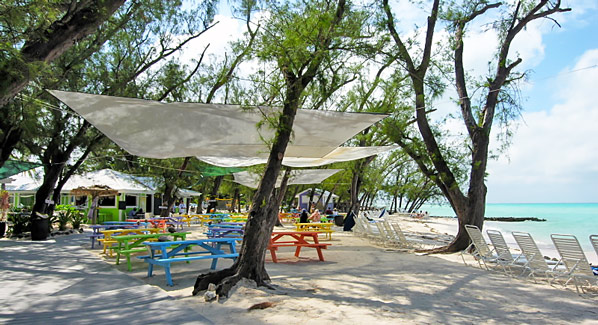
The beach at Rum Point is a favorite gathering point for both visitors and island locals, who come for a game of volleyball or a cool libation at the Wreck Bar. Photo: Retreat at Rum Point

